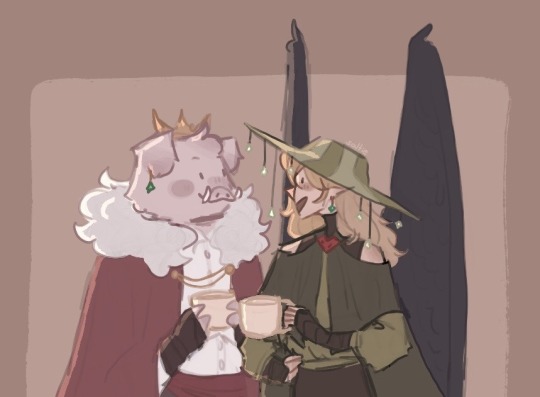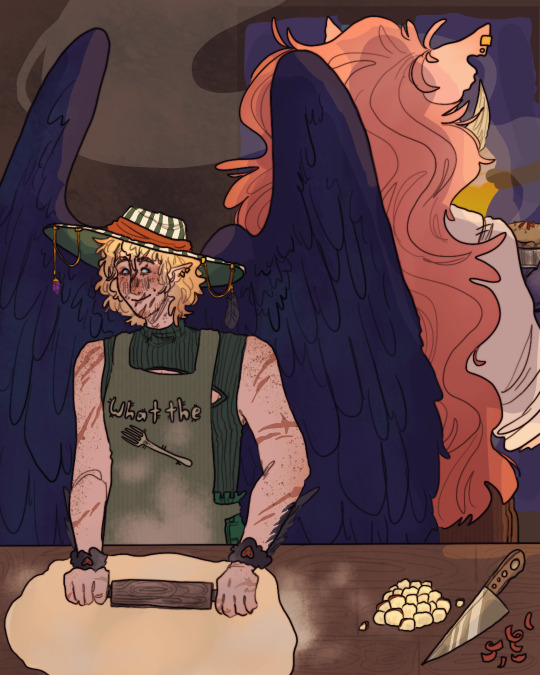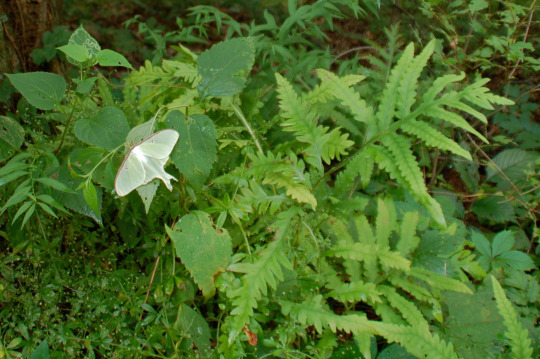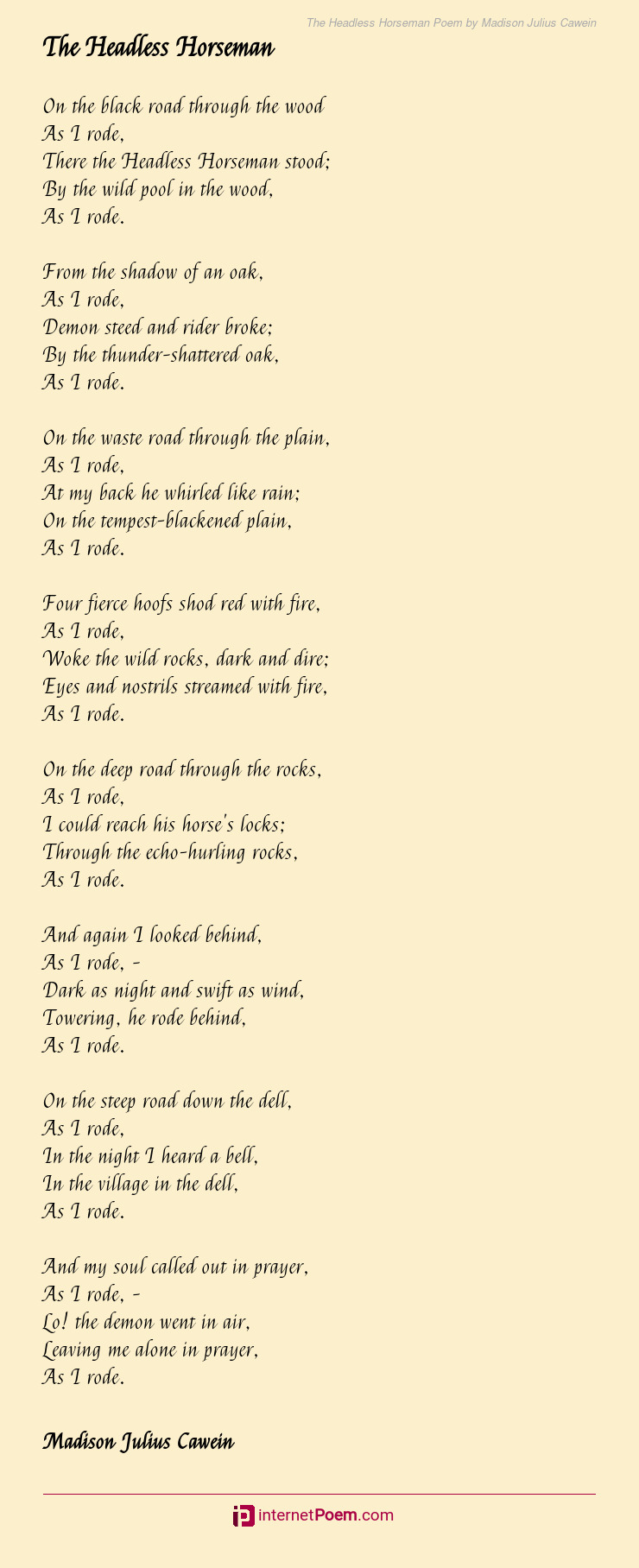#madison julius cawein
Text

Madison Julius Cawein, “Haunted.”
34 notes
·
View notes
Text















emerald duo; sometimes it is not the killing that shows my devotion, let us break this bread together
for @idontreallyexistyet
{200 follower celebration request a web weave!}
franz kafka / @apatura-iris-atelier / @wolfsena / madison julius cawein / @peach-nii / julio cortázar / bob hicok / @xavalav / fleur jaeggy / elaine kahn / @ambsacen / thomas centolella / ashe vernon / @cuppahoney / czesław miłosz
139 notes
·
View notes
Text

Scarlet Pearl: A Double Life SMP Pearl Web Weave
A Fairy stories/Autumnal inspired web weave for @ollyboros as part of the Mcytblr Holidays Exchange
@mcytblrholidayexchange
Hope you have a nice holiday season!
~
Sources:
Fields Swaledale Gunnerside by Kreuzschnabel on Wikimedia
National Dress Cape of Gbraltar by John Cummings on Wikimedia
Vagabonds by Emily Pauline Johnson
Under Canvas by Emily Pauline Johnson
Autumn Path by Yuko Kudos on Wikimedia
Hallowmas by Madison Julius Cawein
Country Brick, Autumn Maple Tree by Forestwander on Wikimedia
Black Fisherman Sandals with Orange Tights and Fall Leaves by Jamie on Wikimedia
Decorated Sword on Swordwallpapers.com
Song V by E. E. Cummings
Tikaani 2 by Saweiss on Wikimedia
The Phantom Horsewoman by Thomas Hardy
Horse Riding, Mountain Pass by Vyacheslav Argenberg on Wikimedia
Bow and Arrow by Arrows and crosses on Wikimedia
Quiver and Arrows by Thos E. Hill on Wikimedia
All Hallows Night by Lizette Woodworth Reese
New Jersey Tree with Autumn Leaves by Tomwsulcer on Wikimedia
57 notes
·
View notes
Text
«Sognare dove la terra giace soleggiata
E vive, come le api, sul vecchio miele del nostro cuore»
(Madison Julius Cawein)

29 notes
·
View notes
Text

Madison Julius Cawein, from “The Naiad Poem”
10 notes
·
View notes
Text
Just started playin a DnD game with some friends, and as my character is a creeeeeepy creepy Bard of Whispers, I decided to write him a creepy, whispery song - in honour of our session zero.
Omens
Poem by Madison Julius Cawein
Sad o'er the hills the poppy sunset died.
Slow as a fungus breaking through the crusts
Of forest leaves, the waning half-moon thrusts,
Through gray-brown clouds, one milky silver side;
In her vague light the dogwoods, vale-descried,
Seem nervous torches flourished by the gusts;
The apple-orchards seem the restless dusts
Of wind-thinned mists upon the hills they hide.
It is a night of omens whom late May
Meets, like a wraith, among her train of hours;
An apparition, with appealing eye
And hesitant foot, that walks a willowed way,
And, speaking through the fading moon and flowers,
Bids her prepare her gentle soul to die.
-
Lyrics are not by me, but everything else is >;)
#dnd music#bard of whispers#dnd bard#curse of strahd#dnd character#creepy music#whispers#siddal#omens#music by me
4 notes
·
View notes
Photo

June - Summer - 2023
The fourth of June’s Strawberry full moon lights the beginning of summer that rises in June’s bloom
/
‘White as a lily moulded of Earth's milk
That eve the moon bloomed in a hyacinth sky;
Soft in the gleaming glens the wind went by,
Faint as a phantom clothed in unseen silk:
Bright as a naiad's leap, from shine to shade
The runnel twinkled through the shaken brier;
Above the hills one long cloud, pulsed with fire,
Flashed like a great enchantment-welded blade.
And when the western sky seemed some weird land,
And night a witching spell at whose command
One sloping star fell green from heav'n; and deep
The warm rose opened for the moth to sleep;
Then she, consenting, laid her hands in his,
And lifted up her lips for their first kiss.
II.
There where they part, the porch's steps are strewn
With wind-blown petals of the purple vine;
Athwart the porch the shadow of a pine
Cleaves the white moonlight; and like some calm rune
Heaven says to Earth, shines the majestic moon;
And now a meteor draws a lilac line
Across the welkin, as if God would sign
The perfect poem of this night of June.
The wood-wind stirs the flowering chestnut-tree,
Whose curving blossoms strew the glimmering grass
Like crescents that wind-wrinkled waters glass;
And, like a moonstone in a frill of flame,
The dewdropp trembles on the peony,
As in a lover's heart his sweetheart's name.’
Madison Julius Cawein, A Night In June
/
‘The silvery tears of April? Youth of May?
Or June that breathes out life for butterflies?’
John Keats, To The Ladies Who Saw Me Crowned
/
0 notes
Photo

Algy had observed that his little green dragon friend was becoming a wee bit agitated, and he guessed that it might be feeling somewhat bemused and lost in the wild west Highlands of Scotland, which no doubt seemed a strange and alien land to a native of faraway Patadragonia.
So the next morning, which was fine but exceedingly windy, Algy suggested that they explore the local area around his home. He knew a wee sheltered spot by the burn where he thought his little friend might feel rather more comfortable, as it reminded him of a stream in Patadragonia to which the dragon had taken him when they had first met, almost a year ago.
Although it was mid-March, the landscape was showing little sign of spring green as yet, but while the two friends rested among the still-bare, scrubby bushes on the steep banks of the burn, yellow catkins danced on a small hazelnut tree on the opposite side of the water, and Algy knew that soon everything would burst into fresh growth once again.
The little green dragon seemed calmer beside the water, although whether that was owing to the delightfully soporific trickling sound which was always guaranteed to soothe any anxious creature, or simply to the more congenial location, Algy could not tell. But to soothe it even further, he began to recite, in a soft fluffy voice, a long poem which could almost have been written in the Scottish Highlands, but which in fact was the work of an American known as “the Keats of Kentucky”:
Misty are the far-off hills
And misty are the near;
Purple hazes dimly lie
Veiling hill and field and sky,
Marshes where the hylas cry,
Like a myriad bills
Piping, 'Spring is here!'
A redbird flits,
Then sings and sits
And calls to his mate,
'She is late! she is late!
How long, how long must the woodland wait
For its emerald plumes
And its jewelled blooms?
She is late! she is late!'
Along the stream,
A cloudy gleam,
The pussy-willows, tufted white,
Make of each tree a mighty light;
Pearl and silver and glimmering gray
They tassel the boughs of the willow way;
And as they swing they seem to say,
With mouths of bloom
And warm perfume:
'Awake! awake!
For young Spring's sake,
O little brown bees in hive and brake!
Awake! awake!
[Algy is reciting the first part of the long poem Catkins by the 19th century American poet Madison Julius Cawein.]
#Algy#photographers on tumblr#writers on tumblr#Scotland#Scottish Highlands#burn#stream#early spring#spring in scotland#landscape#Scottish landscape#poem#catkins#poetry#madison julius cawein#little green dragon#soothing#adventures of algy#original content
63 notes
·
View notes
Text

Madison Julius Cawein, “Love In A Garden.”
719 notes
·
View notes
Photo

The Wood-Path - Madison Julius Cawein
Here doth white Spring white violets show,
Broadcast doth white, frail wind-flowers sow
Through starry mosses amber-fair,
As delicate as ferns that grow,
Hart's-tongue and maiden-hair.
Here fungus life is beautiful,
White mushroom and the thick toad-stool
As various colored as wild blooms;
Existences that love the cool,
Distinct in rank perfumes.
Here stray the wandering cows to rest,
The calling cat-bird builds her nest
In spice-wood bushes dark and deep;
Here raps the woodpecker his best,
And here young rabbits leap.
Tall butternuts and hickories,
The pawpaw and persimmon trees,
The beech, the chestnut, and the oak,
Wall shadows huge, like ghosts of bees
Through which gold sun-bits soak.
Here to pale melancholy moons.
In haunted nights of dreamy Junes,
Wails wildly the weird whippoorwill,
Whose mournful and demonic tunes
Wild woods with phantoms fill.
77 notes
·
View notes
Text

Madison Julius Cawein, At Moonrise
1 note
·
View note
Text


A History of Jack O' Lanterns/Goblin Market
A Hermitcraft Season 8 PearlescentMoon Halloween themed Web Weave for @vacillantvoid for @mcyt-halloween !
Happy Halloween!
~
Credits:
Brassica Turnip by Peter Presslein at Wikimedia
Engaging Ireland Podcast
Wikipedia - Jack O Lantern
Wikipedia - Jack O Lantern
Pumpkin Stack Closeup by Jefferey Martin on Wikimedia
Clarke Trail by Mario Haines on Wikimedia
M. Macklin's Jack O Lantern by David McCord
Jack O Lantern by Ruth Edna Kelley at Wikimedia
Goblin Market by Christina Rossetti
Fall Wine by thecottagemarket.com
Hallowmas by Madison Julius Cawein
Full Moon Rising by George Spandoudakis on Wikimedia
Pumpkin Projection by Matthew Gordon on Wikimedia
Jack O Lantern by Halloweenalley.ca
27 notes
·
View notes
Text
What is that which walks by night
In flying tatters of leaves and weeds,
When the clouds rush by like daemon steeds,
And the moon is a jack-o'-lantern light
Low in the pool's dark reeds?
What is that, like a soul who sinned?
Is it a witch? or the Autumn wind?
What is that which sits and glowers
Under the trees by the forest pool?
With a cloak of moss whence the raindrops drule,
Chilling the air with a sense of showers
And touch of the cold toadstool:
What is that, with its breath of gloom?
Is it a witch? or the Fall perfume?
What is that in a mantle of gray,
With rags, like water, that wreathe and wind?
That gropes the forest, as if to find
A path, long-lost, on its midnight way,
Shadowy, old and blind:
What is that, so white and whist?
Is it a witch? or the Autumn mist?
You may have met them; you may have heard;
As I have heard them; as I have met:
The three gray sisters of wind and wet
Each With a spell or a cryptic word
Working her magic yet:
The three gray sisters, the witches old,
Daughters of Autumn, who haunt the wold.
The Gray Sisters by Madison Julius Cawein
2 notes
·
View notes
Text
Beyond the barley meads and hay,
What was the light that beckoned there?
That made her sweet lips smile and say
'Oh, busk me in a gown of May,
And knot red poppies in my hair.'
Over the meadow and the wood
What was the voice that filled her ears?
That sent into pale cheeks the blood,
Until each seemed a wild-brier bud
Mown down by mowing harvesters?...
Beyond the orchard, down the hill,
The water flows, the water whirls;
And there they found her past all ill,
A plaintive face but smiling still,
The cresses caught among her curls.
At twilight in the willow glen
What sound is that the silence hears,
When all the dusk is hushed again
And homeward from the fields strong men
And women go, the harvesters?
One seeks the place where she is laid,
Where violets bloom from year to year
'O sunny head! O bird-like maid!
The orchard blossoms fall and fade
And I am lonely, lonely here.'
Two stars burn bright above the vale;
They seem to him the eyes of Ruth:
The low moon rises very pale
As if she, too, had heard the tale,
All heartbreak, of a maid and youth.
3 notes
·
View notes
Text
Fern Seeds in Anglo-Celtic Folklore

“We have the receipt of fern seed: we walk invisible.”
(Shakespeare, Henry IV Part I, Act 2, scene 1)
In the magical and folkloric traditions of the Insular Celts (among others,) one plants was so widely knownnfor its mystical properties that it made casual appearances works like Shakespeare’s Henry IV: that of the mystical and fabled Fern Seed.
Ferns themselves are attributed with a vast array of magical and medicinal capabilities throughout different cultures, such as healing, protection, fertility, and weather magic, but they are, in particular, associated with Faeries and the Faery Realm. However, within the context of Brythonic, Gaelic, and Breton folklore (along with various other cultures across Europe,) there are magical practices specifically associated with Fern Seeds. As put by Thomas Jackson in A Treatise Concerning the Original of Unbelief, 1625:
“It was my happe since I undertook the Ministrie to question an ignorant soule… what he saw or heard when he watch’t the falling of the Ferne-seed at an unseasonable and suspitious houre. Why (quoth he) … doe you think that the devil hath ought to do with that good seed? No: it is in the keeping of the King of Fayries and he, I know, will do me no harm: yet he had utterly forgotten this King’s name until I remembered it unto him out of my reading of Huon of Bordeaux.” (i.e. Alberich/Oberon)
The magical qualities of Fern Seed are recalled even into the modern era, with mainstream representations of the practice recounted as recently as Madison Julius Cawein’s 19th century poem, The Spell:
“St John hath told me what to do
To search and find the ferns that grow
The fern seed that the faeries know;
Then sprinkle fern seed in my shoe,
And haunt the steps of you, my dear,
And haunt the steps of you.”

In other traditions, the seed was said to be capable of disclosing the location of lost things and secreted treasure. This particular belief gave rise to a custom known as “Watching the Fern,” which involved observing ferns (particularly those known as moonworts) on Midsummer Eve in hopes that, if lucky, one would witness the blooming of a rare blue flower that shed seeds which, if properly collected, conferred the collector with the ability to discover lost items and hidden treasures. It was also thought that drinking the sap of these “Blossomed” ferns on Midsummer Eve granted extended longevity or perpetual youth. Elsewhere, they have been used to bring luck, converse with animals, and protect against harmful magic, however, Fern Seeds are probably best known for their purported ability to empart invisibility upon those who obtain them. During the Middle Ages especially, it was widely believed that if one could successfully collect Fern Seeds in the proper manner, they would gain the gift of moving unseen through the world.
The most prominent tradition surrounding the collection and employment of Fern Seeds states that they are shed from their fronds at midnig Midsummer’s Eve at midnight (also venerated as the Eve of the Feast of St. John the Baptist.) It was thought that one could harvest the cryptic fern seeds by stacking twelve pewter plates beneath a fern frond. At midnight, a brilliant blue blossom opened, producing a single golden seed. The seed would then pass through eleven of the pewter plates and come to rest on the twelfth. Aside from this, various other requirements for successful harvesting of the Fern Seed have been observed, such as the need for the seeker to go collecting bare-footed, and in a spiritual state of mind. However, even adhering to any and all of these conditions, the seeker still often found their Fern Seeds stolen by wandering Faeries, who also relied on the magics of the Midsummer Seed. Other myths stated that the flower was bright crimson, and would light up the darkness when it unfurled its petals at midnight. At this point, if the seed wasn’t harvested immediately, the Devil was said to claim the flower for himself.

As attested to by Richard Bovet in his 1684 treatise on demonology, Pandaemonium:
“Much discourse about the gathering of Fern-seed (which is looked upon as a Magical herb) on the night of Midsummer’s Eve, and I remember I was told of one that went to gather it, and the Spirits whistlit by his ears like bullets and sometimes struck his Hat or other parts of his Body. In fine: though that he had gotten a quantity of it, and secured it in papers and a Box besides, when he came home he found it all empty. But probably this appointing of times and hours is the Devil’s institution.”
In many regions, great precautions were taken to protect would-be-collectors with magical measures as well. An account by English author, Samuel Bamford, describes incantations and rites meant to accompany any attempts made to gather Fern Seed—lest the seeker fall prey to the grim consequences of blundering in their supplications and/or being deemed as unworthy by the Resident Wights. The fern was said to be located in a Faery Clough (Narrow Valley,) and collectors repprtedly traveled there armed with multiple items, including a pewter platter, an earthenware dish, and a skull lined with clay and moss, adorned with a tress of a loved one's hair. Numerous orisons were recited whilst the seed was gently scraped onto the plates through use of a Hazel Rod.


Now, it is worth noting that, while societies of antiquity believed that all plants must reproduce by seeds, Fern’s are actually one of a few extant plant spieces that reproduces through the process of sporulation. This misunderstanding led many people to believe that fern seeds were merely invisible, since the plants still managed to reproduce despite having no visible means of reproduction that lined up with the contemporary botany of the time. However, given that many varieties of fern do produce spores visible to the naked eye, despite their diminutive nature, many people did claim to have seen the elusive “seeds” at one time or another. All of this lent itself then to the belief that, if a person obtained one of these invisible seeds, they too could become invisible. That said, the practice lives on to this day, with those who partake in the tradition of “Watching the Fern,” observing to see if any of these spore should form at midnight on Midsummer Eve—bringing with them the magic of the Faeries.


#ferns#faerie folk#faery folk#faerie#faerie faith#fae folk#fair folk#invisibility#traditionao witchcraft
369 notes
·
View notes
